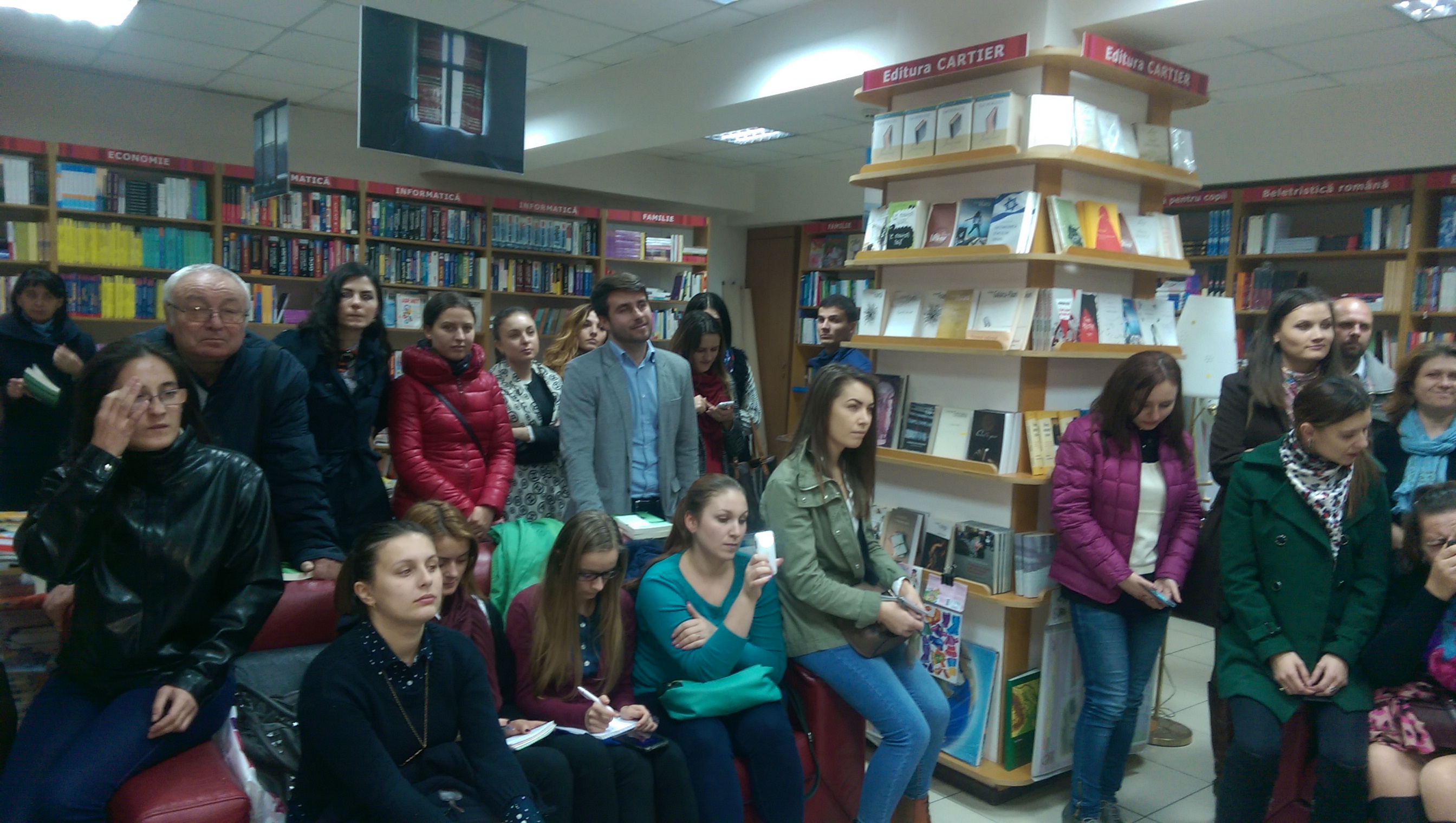A book of journalistic reports as a training manual for future authors of journalistic reports

“Places. People. Stories” is the title that gathered, in the evening of October 28, dozens of graduates and students of the School of Advanced Journalism (SAJ) and other young people that are starting in this profession. They all came to a bookstore in the center of Chisinau to see how radio reporting can be transformed into text for a book and to meet the book’s author – journalist Liliana Nicolae of radio Europa FM Bucharest, who is also a trainer at the SAJ.
Liliana Nicolae’s book, which appeared this autumn, includes 47 of the many more other journalistic reports that she wrote over the past ten years, mainly for the radio, when she worked for Radio Romania News, and after that, written or adapted for such magazines as Dilema veche, Elle, etc.
“In the media environment that does not place much value on journalistic reports, Liliana Nicolae has persevered with intelligence and talent. Well-measured topics and words rebuild the world from pieces to normality,” says literary critic Mircea Vasilescu on the cover. Liliana’s colleagues in Chisinau also spoke about the rehabilitation of a journalistic genre that has been unfairly neglected by many media outlets.
“Journalistic reports are like a photo of the places she saw and the people she met. Whoever reads them can find out how people lived or live in certain places, how things and mindsets change or why they change,” said journalist Alexandru Cantar, the author’s former BBC colleague.
Journalist Dorin Galben, SAJ graduate, appreciated Liliana Nicolae’s role in his professional growth and confessed that he re-listens the trainer’s stories as often as he needs for inspiration. “I listened to, read and re-read almost all of Liliana’s journalistic reports and was never bored. And when I’m in writer’s block, I also seek inspiration in her work. I was fortunate to learn from her, and every time after listening I see and feel her stories differently,” Dorin Galben said.
“It has been the sixth autumn when Liliana comes to Chisinau to teach our students how to make the best radio reports, and we are glad to have such a professional as one of our trainers, because only a professional can transform a material that was initially conceived as an audio story into text with so much talent and transmit to us colors, aromas, sounds, conditions through words…,” said Sorina Stefarta, SAJ director. She also welcomed Liliana Nicolae’s insistence of persevering in this journalistic genre, mentioning that “in an era of massive copy-paste, institutionalized verbatim reports as a genre of the press and exclusion of creativity from journalistic materials, rehabilitation of journalistic reports is a big challenge.”
“I am often impressed by the people that I talk with and, in my turn, I try to transmit these emotions to those who listen to or read my reports. Whether you make stories for radio or for newspapers, you need to have all your senses with you when you do field work. You must observe, ask questions, and also listen – a thing that is rare nowadays, because journalists, used to hear themselves, forget about the people they interact with and only look for sensation in any discussion they have. I’d like to know that my stories are a reference for those who want to do quality journalism, here of anywhere else,” Liliana Nicolae said to those who came to the bookstore.
Liliana Nicolae has been working in the media since 1990. She was an editor of the BBC World Service between 1999 and 2008, when the Romanian section in Bucharest was closed. Then she worked at Radio Romania News, where she made documentaries and journalistic reports. Since 2007, she has been writing for Dilema veche magazine, and currently she is producer at Radio Europa FM and teaches at SAJ. The launch of “Places. People. Stories” is a premiere for the School of Advanced Journalism, where this week Liliana Nicolae has held a course on radio journalism (aspects of journalistic reports). The course involves lessons on writing news stories for radio and assembling materials for newscasts. All lessons are accompanied by practical exercises, in classrooms and in the field.
